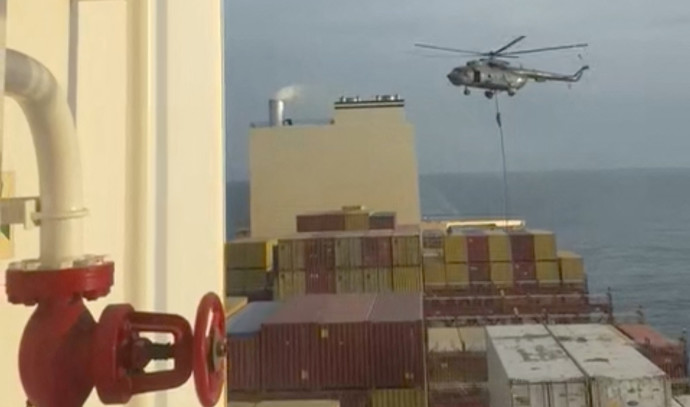FILE: Aerial view of San Francisco International Airport with United Airlines jets in 2017.
Smith Collection/Gado/Getty ImagesIn this week’s news, airline travelers are expected to number a record 3 million on several days over the Christmas holidays; a new competitor enters the busy SFO-Taipei route; Alaska Airlines inks a partnership with a fast-growing Canadian carrier; United updates its international schedules for spring; American starts code-sharing with Philippine Airlines; there’s domestic route news from United, Spirit, Breeze Airways, Alaska and Delta; American files an appeal of a federal court’s decision to block its Northeast Alliance with JetBlue; Southwest flight attendants will vote a second time on a new contract proposal after concerns about the reliability of the first poll; Delta expands facial recognition passenger processing to three more big airports, including LAX; Alaska revises the rules for gaining elite status in its mileage program; it’s happening very slowly, but SFO’s runways are sinking into the earth; Oakland International plans to offer gift-wrapping for travelers on the Friday before Christmas.
If you thought air travel was extra-crowded over Thanksgiving, just wait. According to AAA’s just-released forecast for the year-end holidays, “Airports are expected to be the busiest they’ve ever been over the Christmas and New Year’s travel period.” It defines that period as the 10 days from Saturday, Dec. 23, through Monday, Jan. 1. Noting that airfares are “slightly lower” than last year, AAA said it expects to see 7.51 million air travelers over the holidays, a gain of 4.7% over last winter and 2.4% over the pre-pandemic year of 2019. The vast majority of holiday travelers — about 103.6 million — are expected to take to the road, but AAA notes that total is 4.1% lower than in 2019.
The trade group Airlines for America uses a longer timeline for the holidays — Dec. 20 through Jan. 2 — and it predicts its member carriers will board 39 million passengers during that period, or an average of 2.8 million a day. The number is expected to reach or exceed 3 million a day on Dec. 21 and 22 and the four days after Christmas. A4A counts flights rather than trips, so its numbers are bigger than AAA’s due to the many travelers who take connecting flights. The Transportation Security Administration’s current record for the most passengers screened in one day is 2.9 million, which was set on the Sunday after Thanksgiving last month.
Advertisement
Article continues below this ad
Starlux Airlines lands at Tan Son Nhat International Airport in Vietnam.
Quang Ho/Getty ImagesAlaska Airlines has added a 30th international carrier to its partnership roster: Canada’s Porter Airlines. Porter, once a small player in eastern Canada, has been expanding both within Canada and across the border since it started acquiring longer-range regional jets, and it plans to start flying to its Toronto base from San Francisco on Jan. 25 and from Los Angeles International on Jan. 16. Those flights can now be purchased on Alaskaair.com. “Mileage Plan members who buy Porter flights on our website also earn at least 100% of the miles flown and 100% elite-qualifying miles,” Alaska said. Passengers flying on Porter to Toronto can connect there to other Canadian destinations like Ottawa, Montreal and Halifax. Porter plans to use Embraer E195-E2s with 132 seats, and no middle seats.
FILE: Qantas Captain Steve Anderson dressed as Santa Claus does his visual inspection of his Boeing 737 aircraft at Brisbane Airport in December 2020.
James D. Morgan/Getty ImagesAdvertisement
Article continues below this ad
Philippine Airlines this week started a code-sharing partnership with American Airlines. “American’s customers are now able to book tickets on aa.com for code-share flights operated by Philippine Airlines to Manila and Cebu via Tokyo. Additionally, customers will be able to fly to Manila from Honolulu and Guam,” American said. Philippine Airlines will put its code on AA flights between Los Angeles and seven U.S. cities: Denver; Houston; Atlanta; Las Vegas; Miami and Orlando, Florida; and Washington, D.C.
On the domestic side, AeroRoutes reports that United this week introduced a wide-body 787-8 Dreamliner on one daily San Francisco-Houston flight, continuing through Jan. 8, to handle holiday demand. Spirit Airlines will discontinue service March 4 between Oakland International and Orange County Airport in Santa Ana, a route also served by Southwest. Starting May 29, low-cost Breeze Airways will introduce one-stop service five days a week between Orange County and Hartford, Connecticut. Alaska Airlines launched service this week between San Luis Obispo and Las Vegas, using a 76-passenger E175, as well as seasonal service through April 9 from Los Angeles and Seattle to Nassau, Bahamas, operating three to four days a week. Delta, which recently decided to end its weekly nonstops from Los Angeles and Phoenix to New York LaGuardia, will do the same with its Saturday-only Las Vegas-LGA service effective Feb. 24 and Salt Lake City-LGA flights as of March 30.
An American Airlines plane lands on a runway near a parked JetBlue plane at the Fort Lauderdale-Hollywood International Airport on July 16, 2020, in Florida.
Joe Raedle/Getty ImagesAfter a federal judge put an end to the JetBlue-American Airlines Northeast Alliance last spring, American said it expected to appeal the decision, which came in a Justice Department antitrust lawsuit against the combination — and this week it did. Both airlines have since dismantled much of their code-sharing and route-planning cooperation in markets out of New York and Boston, and neither airline is expecting to resume that partnership. Instead, American says it is challenging the judge’s decision so it can protect other partnerships from what it claims is an overbroad ruling. According to Reuters, American’s appeal argued that “if left unchecked, the district court’s decision will discourage fruitful and lawful collaboration that benefits consumers through increased output, decreased prices, and improved product quality.” American has a similar agreement with its Oneworld alliance partner Alaska Airlines on the West Coast.
Advertisement
Article continues below this ad
A Delta employee holds a Digital ID sign at Hartsfield-Jackson Atlanta International Airport on June 30, 2023, in Georgia.
Elijah Nouvelage/AFP via Getty ImagesDelta’s Digital ID technology, a facial recognition system introduced at its Atlanta and Detroit hubs two years ago, is being introduced at three more airports before the year-end holidays: Los Angeles International, New York JFK and New York LaGuardia. As Delta explains it, Digital ID “allows customers to check bags and move through security without showing a physical government ID,” instead using biometric facial matching for identity confirmation. Use of Digital ID is optional for customers, Delta notes. It’s available to travelers who belong to the Transportation Security Administration’s PreCheck program and to Delta’s SkyMiles loyalty plan. They must also have the Fly Delta app and have passport information and a Known Traveler number stored in their Delta profile.
Advertisement
Article continues below this ad
Alaska Airlines is making some changes to the rules for gaining elite status in its Mileage Plan loyalty program effective Jan. 1, according to The Points Guy. The airline will no longer count elite-qualifying flight segments as a metric, using only elite-qualifying miles instead. It will take 20,000 EQMs to earn MVP status, 40,000 for MVP Gold, 75,000 for MVP Gold 75K, and 100,000 for MVP Gold 100K. Also starting Jan. 1, the program will allow members to earn EQMs by spending on a co-branded credit card. Cardholders can accumulate 4,000 EQMs for each $10,000 spent on the card, up to a maximum of 20,000 EQMs. But on Jan. 1, 2025, many elite members will see their elite bonus mile earnings shrink: MVP members will get a 25% bonus instead of the current 50%, while the bonus for Gold members will drop from 100% to 50% and for Gold 75Ks from 125% to 100%. Gold 100Ks will still earn a 150% bonus.
FILE: A 360-degree view of the runways from the new air traffic control tower in San Francisco in October 2015.
Paul Chinn/The San Francisco Chronicle via Getty ImagesBesides earthquake risk and the long-term likelihood of coastal flooding due to climate change, officials at San Francisco International Airport now have another issue to keep an eye on: runway subsidence. As reported this week in Tech Xplore, a study by scientists at Virginia Tech found that the runways at SFO are subsiding (i.e. sinking) faster than at any other major U.S. coastal airport. The study used extremely sensitive satellite-based radar to scan the runways at 15 U.S. coastal airports over seven years — the first time such a study has ever been conducted, they said — and found a subsidence rate at SFO of 0.38 inch per year. The lowest subsidence rate of the 15 airports studied was at Los Angeles International at 0.07 inch annually. Virginia Tech researcher Manoochehr Shirzaei told CBS News the almost imperceptible rate of sinking at SFO doesn’t present an immediate threat to flight operations, “But this is a warning for the future, and that future is not that far.”
The scientists noted that the runway subsidence at SFO is not happening at the same rate all over the airport. Virginia Tech’s Oluwaseyi Dasho told CBS: “When you have differential subsidence along the runway, there is a higher risk of damage along the runway. … If there are points higher than the others, it could lead to a change of slope, it could lead to caverning and bulging along the runway. When there is bulging along the runway, it could lead to ponding of water when there is rainfall.”
Advertisement
Article continues below this ad
Oakland International Airport is providing a unique gift-wrapping service for travelers next week. On Friday, Dec. 22 — which the airport said will be its busiest day — OAK plans to have a post-security gift-wrapping station for passengers who have presents in their carry-on luggage. The airport reminds travelers that carrying prewrapped gifts through TSA security screening could result in the packages being opened for inspection. The gift-wrapping station will be in the connecting area between OAK’s Terminals 1 and 2. “Passengers with children may stop by the gift-wrapping station for a complimentary holiday gift bag,” the airport said. “There will also be a holiday selfie station and live performances from local musicians.”







